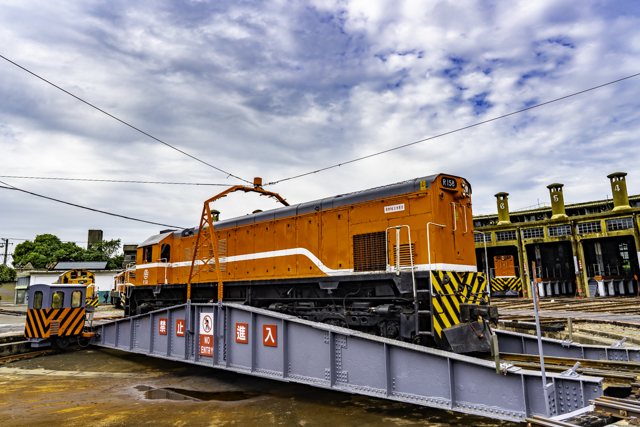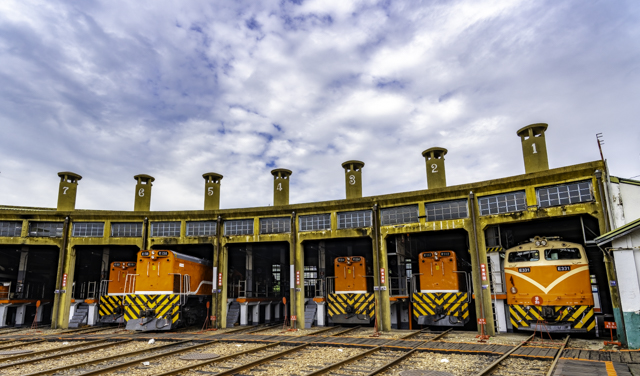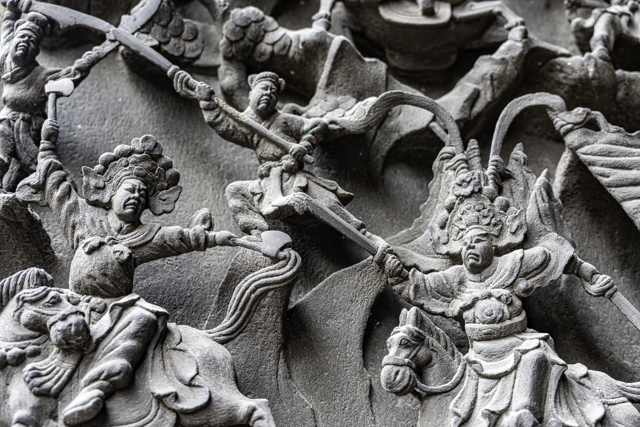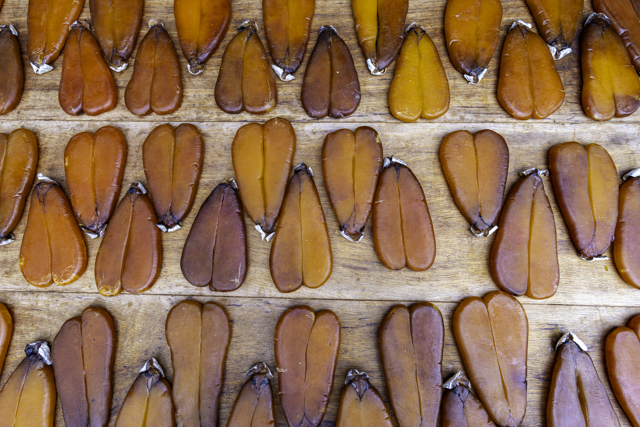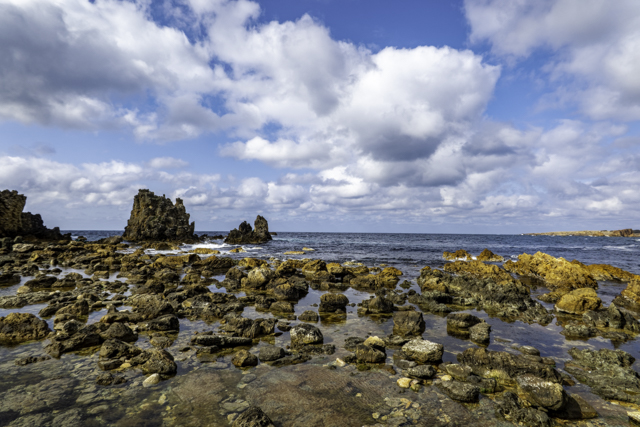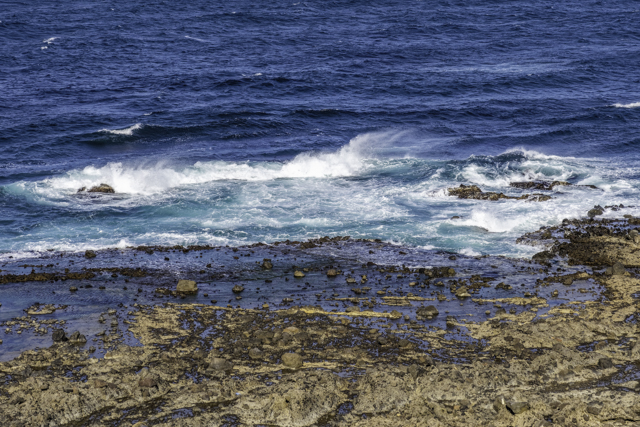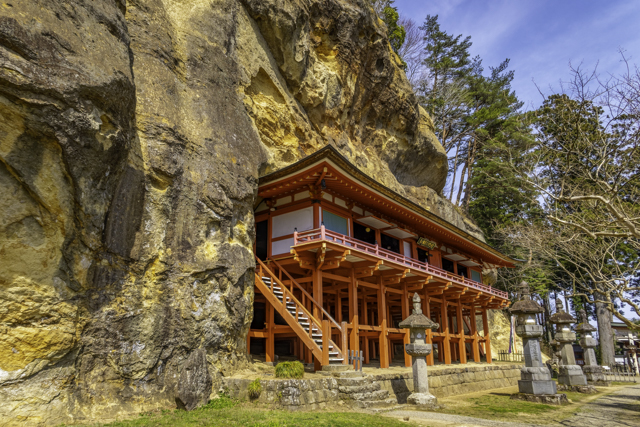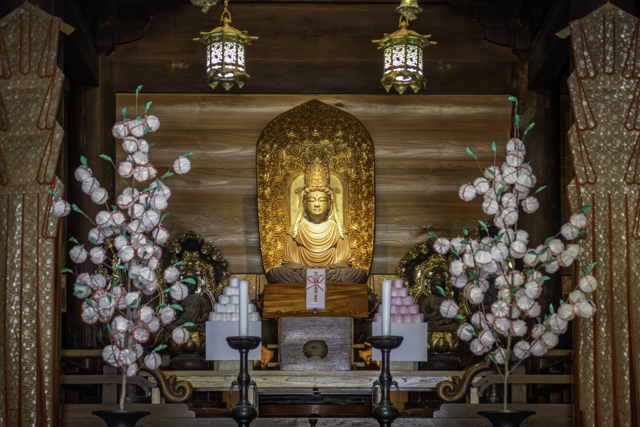
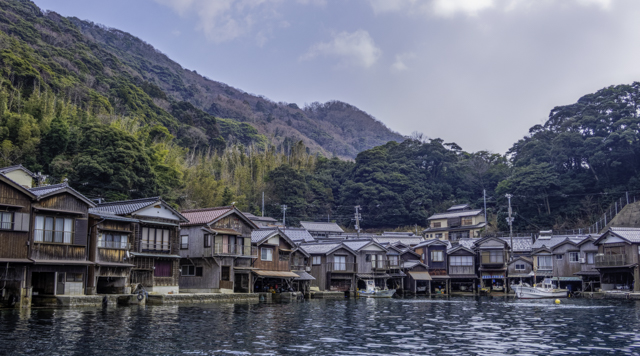
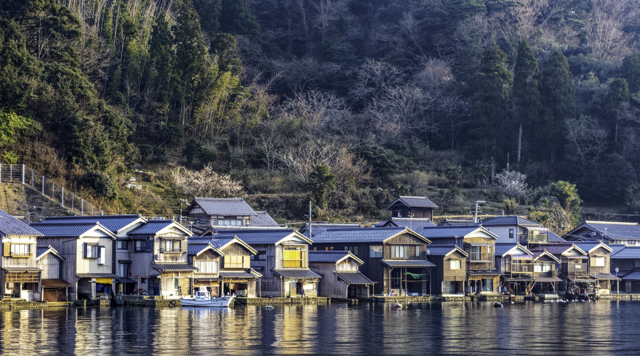
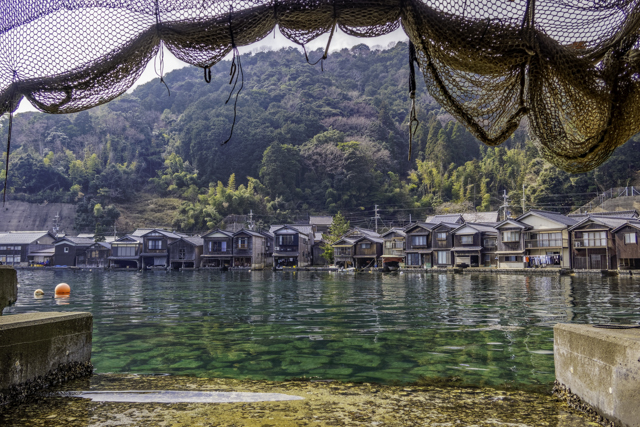
Luck does not last long.
Since I had good weather on my separated trips to Zao and Hokkaido, I looked for a destination where could be enjoyable even if the weather was bad. By that, it would be better to view the cityscape rather than the wilderness. Around that time, one of my friends raved about a fishing village called Ine in northern Kyoto. I decided to go there.
Ine is famous for its rows of houses called “funaya (boathouses)” along the bay, and I was told that I could stay one of these houses. Since funaya is a fishermen’s house, each house is managed independently. It is not easy to find available rooms from one website, but I searched for available rooms using the tourist association’s website as a starting point.
I found a room available at an inn located at a secluded part of the bay. It looked a little far from the center of the town, but I had heard Ine was a small town, so I booked the place without much of concerns.
I planned my trip on the assumption that I could be satisfied even if rained, but I was still concerned about the weather. After all, I checked the weekly forecast every day.
I set out on the Tokaido Shinkansen from Shin-Yokohama. At Kyoto, I changed to the Sanin Line express train and continued on to Miyazu on the Kyoto Tango Railway. From Miyazu, I changed to a bus and headed for Ine. It was a quite a long way.
Still, thanks to the early morning departure from Yokohama, I arrived early and wandered around the town of Ine after the lunch.
When it was time to check in, I walked to the funaya. It was indeed far away. Ine is considered as a small town in terms of population, but the houses are built along long and narrow road on the coastline of Ine Bay. The houses are apparently built where the winds from the Sea of Japan do not directly blow, thus there are parts of the Bay where are no buildings to avoid the winds. This made to feel the funaya even further away. After all, it was about 2 kilometers walk from the center of town.
The most serious problem was dinner. Since the funaya is a rental house, guests have to stay without a meal plan. I had made a reservation at a restaurant, but it was 25-minute or 2-kilometer walk each way. I did not go to Ine for a survival camping, but I had to walk about an hour for my meal. I was terrified to think what would have happened if it had rained on that day.
On the other hand, the funaya was wonderful. Thanks to the curved bay, I could enjoy the view of the boathouse town from the large window. I sat idly and gazed at the bay and houses along. View from the window was probably one of the best in Ine.
Although I was able to fully enjoy the wonderful scenery, the funaya was difficult to reach by public transportation. I initially thought I would not be regretted in Ine even if rained because all I wanted to do was enjoying its townscape. However, if it had rained, I would surely have regretted in a different way. Luck lasts slightly longer than I thought.
It was a good funaya where I have chosen even though I knew nothing about the town, but it was also a funaya that I would not chose if I knew something about the town.
Knowing is a power. In the age when we can research anything we want to, not knowing is also a power.
COLO’s Traveler Guide: Ine
The time shown is the timetable at the time of the visit.
Day 1
Shin-Yokohama 0627 (Shinkansen Nozomi 273) >> Kyoto 0821
Kyoto 0838 (Limited Express Hashidate 1) >> Miyazu 1033
Miyazu 1047 (bus) >> Ine 1157
– Ine Bay tour
– Funaya tour
Overnight stay: Funaya Inn Maruichi
Dinner: Funaya Biyori
Tips for Day 1
– I had heard there were no convenience stores in Ine. The only (?) liquor store was closed, failed to purchase even a can of beer. Need to be prepared…
Day 2
Ine Post Office 1030 (bus) >> Amanohashidate (Motoise Kono Jinja Shrine) 1105
– I walked through Amanohashidate, it was just a walk along the pine forest beach. It did not look like one of the three most scenic spots in Japan from the ground.
– I ate “Chie-no-mochi” (rice cake of wisdom) in front of the gate of Chion-ji Temple. Looking at the temple while eating the rice cake, I felt becoming a little wiser.
– View of Amanohashidate from Amanohashidate Viewland was certainly one of the three most scenic spots in Japan. Amanohashidate should have seen from higher elevation.
Amanohashidate 1347 (Limited Express Hashidate 4) >> Fukuchiyama 1433
Fukuchiyama 1443 (Limited Express Kounotori 18) >> Shin-Osaka 1628
Shin-Osaka 1651 (Shinkansen Nozomi 416) >> Shin-Yokohama 1902
Tips for Day 2
– Due to the decrease of passengers caused by COVID-19, Hashidate 4 was cancelled between Fukuchiyama and Kyoto.

